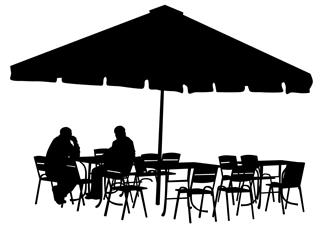
In simple terms, analysis paralysis is a person’s tendency to over-analyze or over-think upon a decision to such an extent that he/she fails to make a choice resulting in a paralyzed state of inaction. Confused? PsycholoGenie further breaks down the concept of analysis paralysis in Psychology for better comprehension.
Anti-pattern
Analysis paralysis is an anti-pattern. Anti-patterns are usual responses to repeatedly occurring problems that are ineffective, and have undesired and counterproductive effects.
Have you been in situations where you find it really tough to choose between two or more things. You surely must have, we all face such situations in day-to-day life. However, our decisions over minor things like, deciding the menu for dinner, choosing a brand of shampoo over another, watching your favorite movie in place of a routine daily soap, etc., don’t really undergo such a dilemma.
People facing analysis paralysis become so involved even in making seemingly easy decisions that they eventually fail to decide or make a choice. For instance, such a person would spend hours thinking if he should ask his boss for a two-day leave or extend it to a three-day one. Why does this happen?
The following write-up would answer all your doubts regarding this psychological concept.
Analysis Paralysis: Definition, Causes, and Cure
Definition
Analysis paralysis is an anti-pattern wherein a person over-analyzes or over-thinks upon a situation such that a decision or choice is never made, thus paralyzing the outcome.
Causes
A person faces analysis paralysis because . . .
he/she bears a deep fear of making the wrong decision.
he/she feels obsessed to make a perfect decision or choose a perfect option, thus delaying his/her decision.
he/she is deluged with options such that he/she is unable to decide upon one out of the many.
even though, a situation is pretty simple and clear to take a decision, he/she would simply over-complicate it.
he/she is engrossed so much in thinking about the outcomes, that it’s already too late to decide anymore.
Practical Ways to Overcome Analysis Paralysis
It’s very important to get rid of analysis paralysis in order to make timely decisions and avoid losing precious opportunities. However, overcoming doesn’t mean avoiding decision-making situations.
Determine the Importance of a Decision
This is the most primary step to perform. Try to prioritize or differentiate between very crucial decisions and the seemingly casual ones. There are also cases wherein people are very good at taking crucial decisions; however, they stumble upon minor day-to-day decisions. If you learn to evaluate the importance of a decision in your life, you would be able to devote the amount of time it actually requires.
For instance, let’s say a person has very efficiently decided the career he wishes to pursue, where to invest, whom to marry, and how many kids to have. However, he has to think twice, thrice, and even more just to decide which shirt to wear for a party. If in this case, the person could determine the importance of each decision, he could have devoted more time to decisions which actually deserved them.
But, how will you classify decisions into big and small – a practical problem with a practical solution. Ask these questions to yourself:
Is this a life-changing decision?
Will the outcome matter after 6 months from now?
What’s the worst and the best thing that can happen after deciding?
If your answers for the first two questions is yes, give a thought towards the third question. In case it isn’t, decide quickly; it’s not a very serious decision anyway.
Identify the Objectives Behind a Decision
If you’re clear about your needs, you’ll find it easier to arrive upon a correct decision. Let’s take an example, you are planning to buy a new car. If you consider the goal of buying a car, you’ll realize that you want a new car because the old one isn’t comfortable anymore. So the sole objective is comfort, this will help you to look for best comfort in all the possible alternatives you wish to consider.
On the other hand, if you wouldn’t have given a thought to the objective, you would be lost learning about the pros and cons of different cars and may end up buying something that doesn’t actually make you happy or satisfy your needs.
The baseline here is, debrief yourself about the objectives that you intend to achieve from your decision or choice.
Set Strict Deadlines
Now this is something important. Consider following this step right after you have determined the importance of the decision. According to the importance, allot specific time to it. However, if the task is not very important, like buying shoes; decide previously upon a said time, like half an hour. If you can’t decide over any one pair of shoes even then, consider deciding not to buy.
The aspect of not deciding between two decisions should also be kept open. If you don’t approve or like something just accept that you don’t like it, and stop investing time thinking about it. You could also set a reminder or mark the last day of the deadline on a calendar (in case of an important decision). Setting a time would automatically stress your mind to decide faster than you would normally do. A moderate amount of stress or eustress will always churn an efficient outcome.
Don’t Look for Perfect But Close to Perfect

A lot of people face analysis paralysis because they focus only on perfect. Let’s think it this way, my perfect would not necessarily be his perfect, and so on. This means there isn’t any standard perfect at all. So what is it that you’re looking for? Look for something you like, something you feel is good. For instance, when choosing a pair of shoes, don’t look for a typical shade of pink. Instead try some pink-colored shoes and check which of them looks really good on you, if you don’t like any, just decide not to buy; you can look in another store. But don’t waste time looking for shoes that perfectly match your expectations.
However, if the decision is a life-changing one, like deciding the girl you would marry; then give the amount of time that the decision deserves. Try to look for something close to perfect, change your perspective towards the situation and try to see another perfect. But, if the decision wouldn’t matter much in your life, take it quickly; even if it’s awful, okay, or awesome, it ain’t going to matter after a certain time.
So, look for moderately good, and not your version of perfect.
Follow the Elimination Method
What if you found more than one option moderately perfect? Elimination is the key. Don’t appreciate options, but criticize them. Try to find flaws that make an option weaker than the others. Eliminate till you end up with one or two final options. In case you would do the opposite, you would simply juggle between the options, telling one better from the other and so on.
Let’s take an example. A decision about hiring an employee out of five with exactly same qualifications and experience sounds tough. To sort this, interview each candidate and write positives and negatives of each. Once you’ve interviewed the lot, eliminate those with higher negatives as you end up with a candidate or a couple of candidates who seem really great. This will help you to narrow down to two and make your task easy.
To put it in a nutshell, don’t review pros but criticize cons.
Once Decided, Do Not Look Back!
If you look back, you’ll once again be lost and start rethinking about your previous decision. So it’s better to stay put on your final decision than to start all over again. Remember that you have already given every option the required amount of time, and hence, have reached to a certain conclusion. Looking back would make you doubt your own judgment.
In case you have two equally tempting options in front of you, just choose one that you like and forget about the other. Consider that you liking something or someone is the ultimate factor of comparison the said decision can have. You could also toss a coin if you feel you like both.
Be firm on your decision. Whatever you decide should be binding upon everything and everyone.
Ask For An Opinion
This is the last thing to do, only in case it’s simply impossible for you to make a decision. However, use this remedy solely for important decisions and not for deciding upon which dress to wear for the dinner party. A third person, in most cases, has a different perspective of the situation that looks so confusing to you. He/she can surely assist you in choosing an option quicker and in an efficient manner.
Also, choose a person who is not likely to be biased. This simply means, he/she should be able to analyze the situation neutrally and then present an opinion. For instance, if you choose the junior manager of your office to discuss layoffs, and if he/she is more friendly or close to a certain employee in discussion; it is more likely that he/she is going to give a biased opinion. In this case, you could ask a friend of yours who doesn’t work in your office and explain the problem to him/her.
If you aren’t able to make a decision despite using all the above remedies, resort to taking an opinion from a neutral and unbiased person.
Analysis paralysis can be experienced in day-to-day life, in business, in relationships, and many other situations. Following the above steps will surely help you reach correct decisions quickly and easily.










